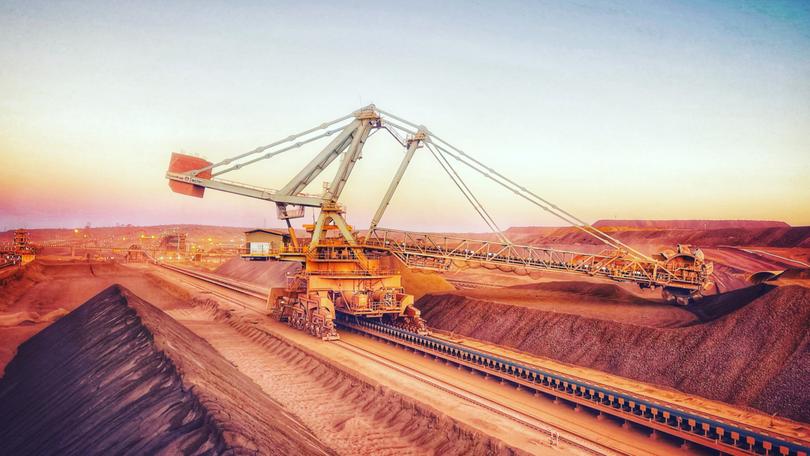THE ECONOMIST: Why does BHP want to buy 107-year-old miner Anglo American?

Talk of takeover has long swirled around 107-year-old Anglo American, once among the biggest mining companies in the world.
On April 25, speculation turned to specifics when BHP, the $US140 billion behemoth that is top of the pile by market value, offered to buy its diminished rival (minus Anglo’s South African business) for $39b.
It then emerged that Elliott Management, an activist hedge fund known for picking apart lumbering giants to unearth buried value, had amassed $1b worth of Anglo shares, giving it a 2.5 per cent stake.
Sign up to The Nightly's newsletters.
Get the first look at the digital newspaper, curated daily stories and breaking headlines delivered to your inbox.
By continuing you agree to our Terms and Privacy Policy.In the following days it raised this slightly, perhaps counting on other suitors to come in and bid up the price.
This clash of big dirt and high finance suggests that Anglo harbours something worth fighting over.
Its big mines indeed tick all the right boxes: high quality and low cost, with the potential to expand.
They are also extracting the right stuff at the right time.
One of Anglo’s main products is copper, which is in high demand, particularly as tonnes of it will be needed for the electrification of transport and power in the green-energy transition; the red metal’s price has risen by 15 per cent this year.
Another is high-grade iron ore, which is in demand for its use in forging green steel.
Best of all, from BHP’s vantage point, Anglo looks like a bargain.
Investors who put $1 into Anglo in 2000 now have $2.50.
A dollar invested in Rio Tinto and BHP has returned $4.40 and $5.70, respectively.
Boss after boss has vowed to turn Anglo round, often stressing its broad portfolio, which extends to exotic commodities like manganese and precious ones like platinum and diamonds.
“Simplification for simplification’s sake doesn’t do anything for us in terms of delivering returns,” Mark Cutifani, a former chief executive, declared confidently in 2021.
Duncan Wanblad, who succeeded Mr Cutifani in April 2022, has not changed course. Investors are unimpressed.
The day before BHP’s offer, the company’s share price was down by 47 per cent on Mr Wanblad’s watch.
Earlier this year Citigroup bank reckoned Anglo would be worth twice its market value if broken up into its constituent businesses.
In 2016, following an industry-wide bust brought on by overcapacity and slowing demand from China, it shed a few smaller businesses, such as niobium and phosphate.
In the past few years it has sold off thermal coal assets in South Africa and Colombia.
But unlike BHP and Rio Tinto, which used the mining slump of the mid-2010s to refocus their operations on a few strategic bets, Anglo has remained distracted.
Although some of its businesses, such as precious metals and diamonds, buoy cashflows when times are good, they can be a drain on capital.
The ageing platinum operations consumed a quarter of Anglo’s capital expenditure in 2023, up from a fifth five years ago.
Anglo was also late to the iron-ore boom caused by insatiable demand from Chinese steel mills, which fuelled the rise of BHP and Rio Tinto in the 2000s.
To catch up, in 2008, it bought a greenfield iron-ore project in Brazil for $14b — the most ever paid for such an asset— only to write down its value in 2013 and again in 2015.
The structural inefficiencies are compounded by operational ones. Anglo’s precious metals and diamond business in South Africa has suffered from rolling blackouts and creaky transport infrastructure.
A $3.5b upgrade of an underground section of its Los Bronces copper mine in Chile finally secured the necessary permits in 2023, four years after it was announced. But climbing costs forced Anglo to shut down a nearby processing plant.
To contain overall expenses, in December Anglo announced plans to cut production of copper and iron ore until the end of 2025.
It did so even as demand for the metals was rising and rivals were expanding projects.
The same month Antofagasta, a Chilean miner, said it would invest another $4.4bn in its giant Centinela copper mine. Antamina of Peru and Barrick Gold of Canada have also recently doubled down on the commodity.
Emboldened by all the attention, Anglo has rejected BHP’s initial bid.
Markets expect a more generous offer: Anglo’s market capitalisation has jumped to nearly $45b, from $35b on April 23.
Given a string of recent mining mega-deals as the industry reimagines itself for a greener world, they are probably right.
